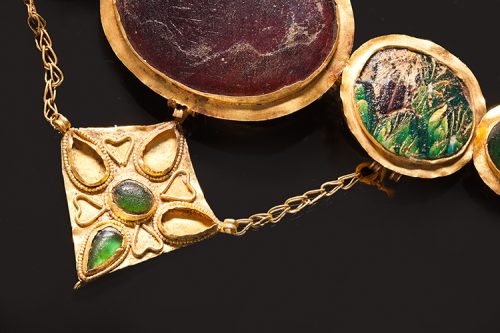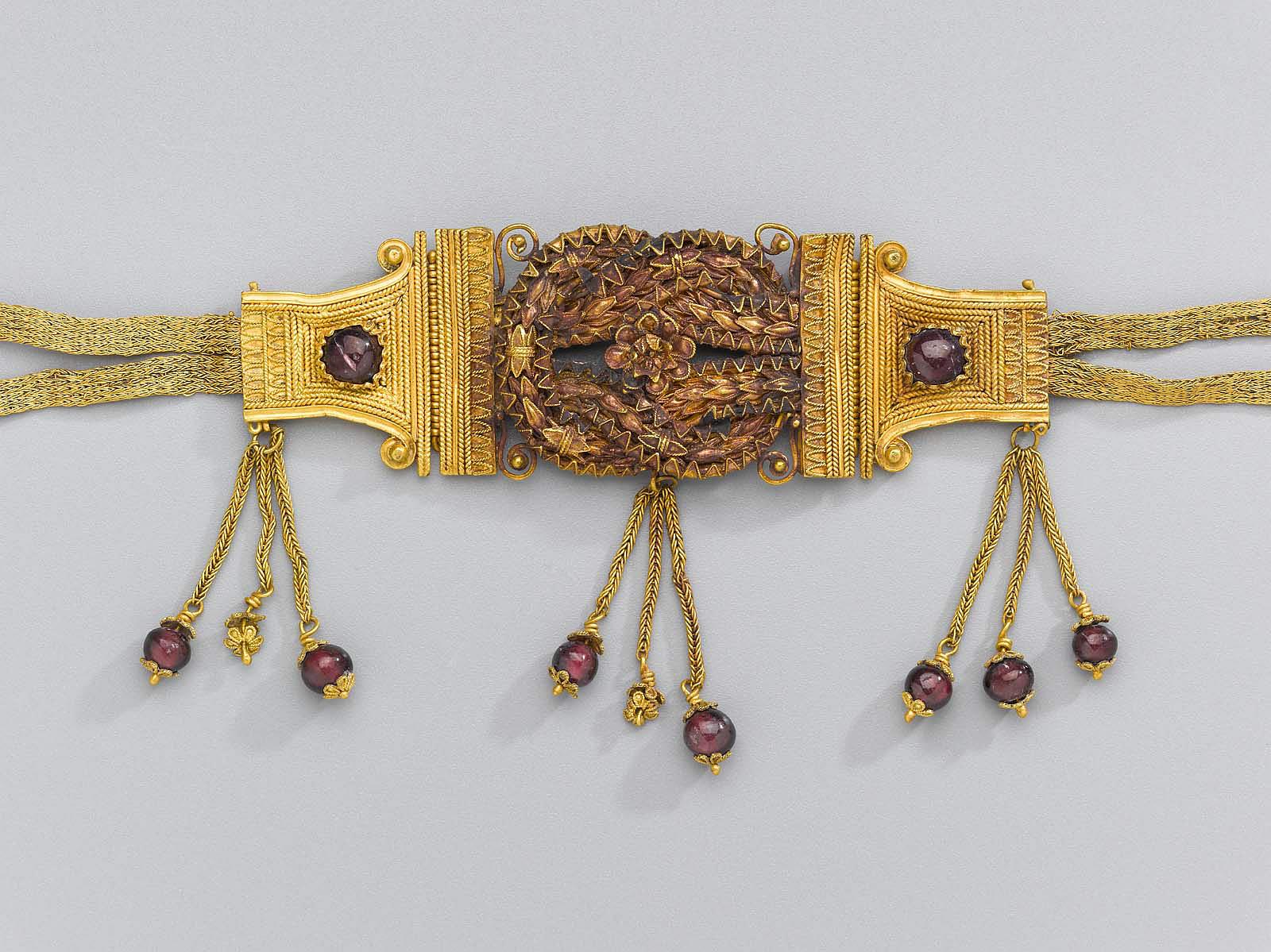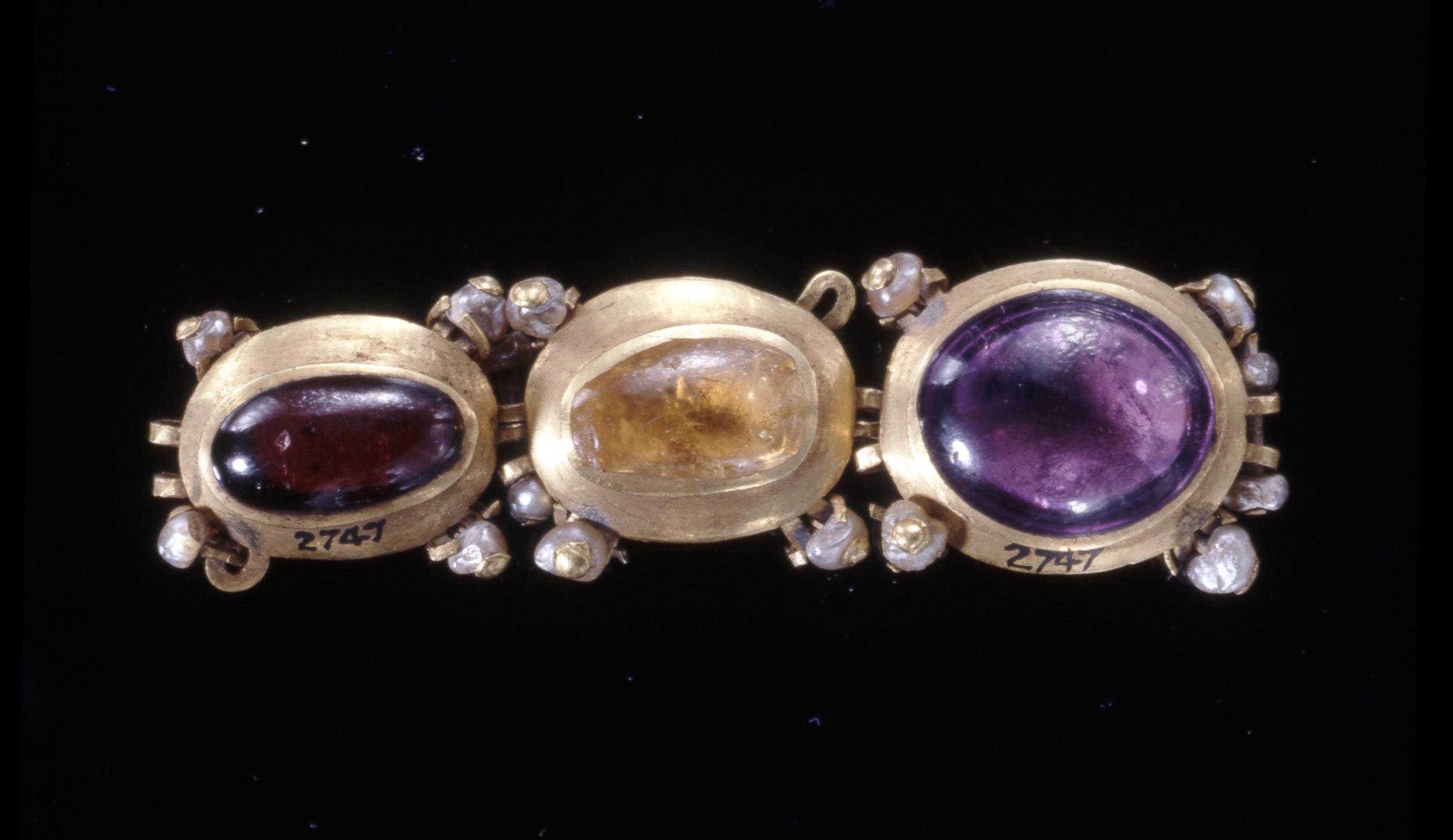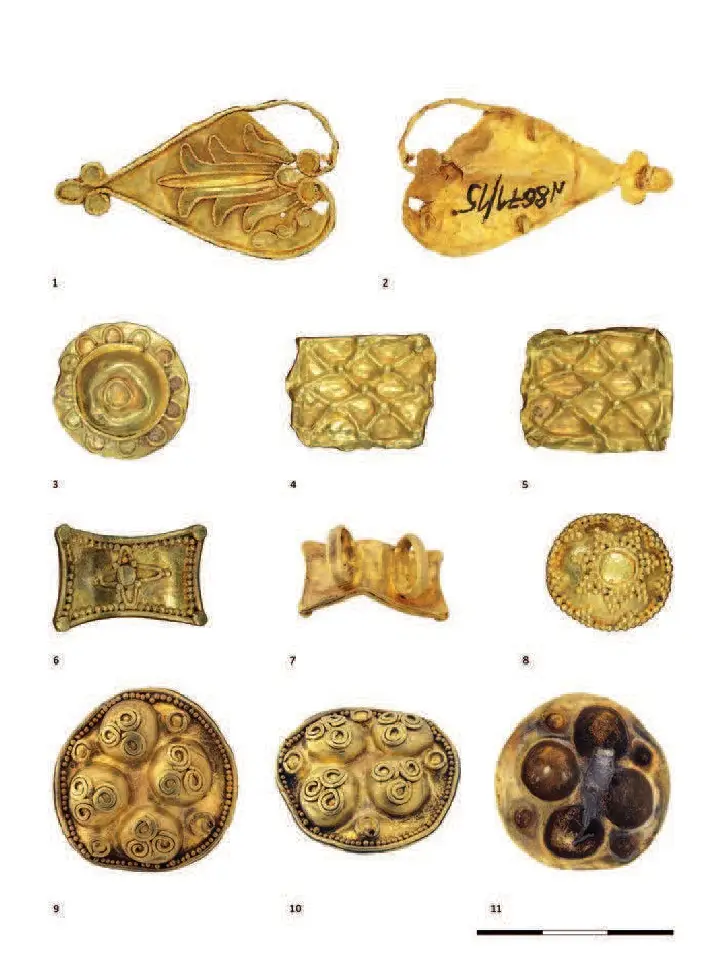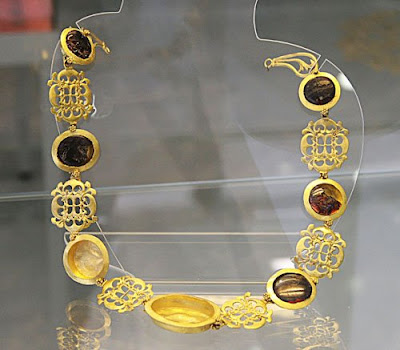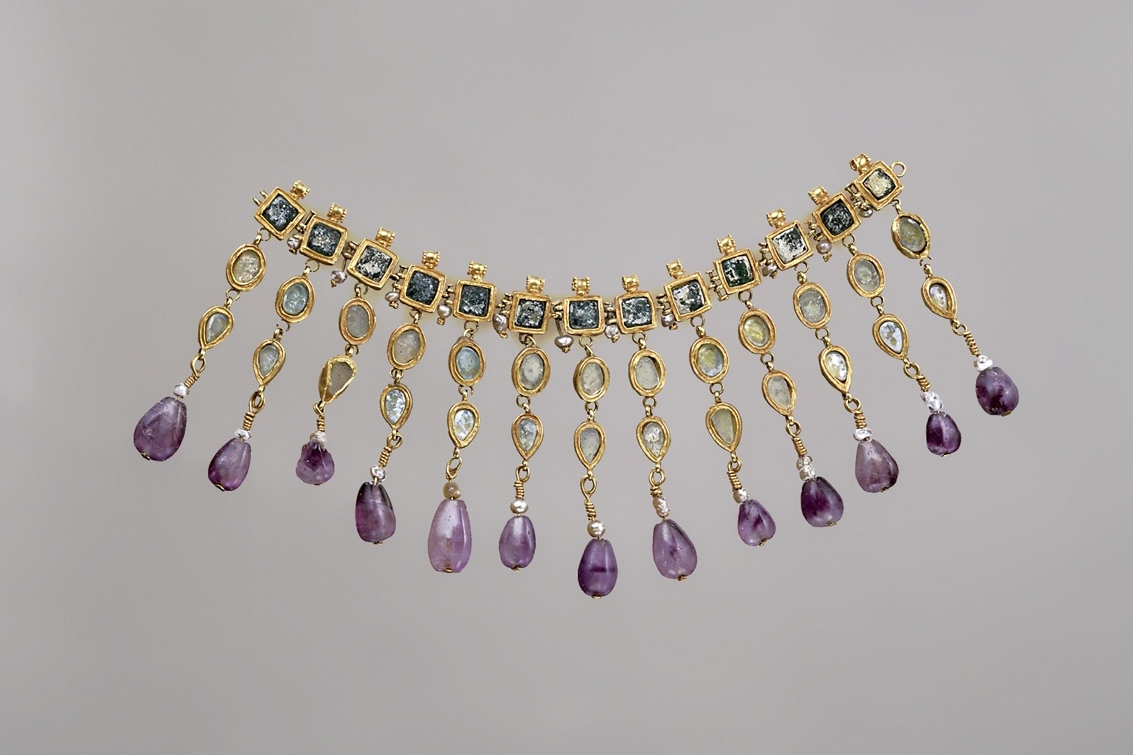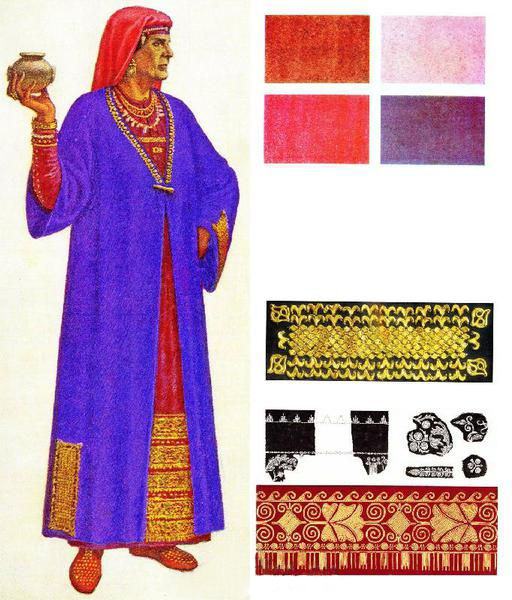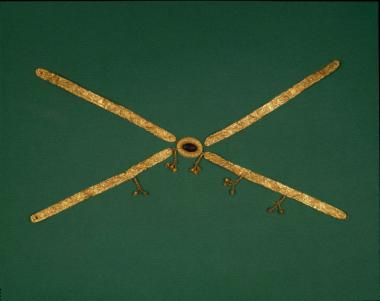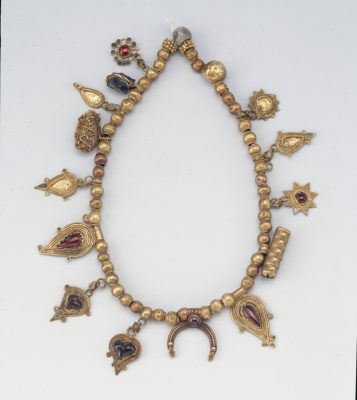
Χρυσό περιδέραιο. By Eliades Elias – 2015 – Archeological Receipts Fund, Greece – CC BY-ND.
https://www.europeana.eu/item/2064902/https___www_searchculture_gr_aggregator_edm_TAPA_000054_11631_17726
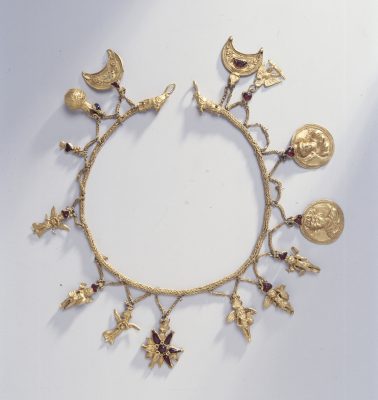
[read more]


This necklace is intricately braided with gemstones and gold wire, of which 19 of the original 20 pomegranates have survived.
in the Roemer- und Pelizaeus-Museum Hildesheim https://commons.wikimedia.org
An exhibition at Cincinnati Museum Center https://cincinnatiusa.com
“Egypt: The Time of the Pharaohs” exhibition at the Cincinnati Museum Center” [link]

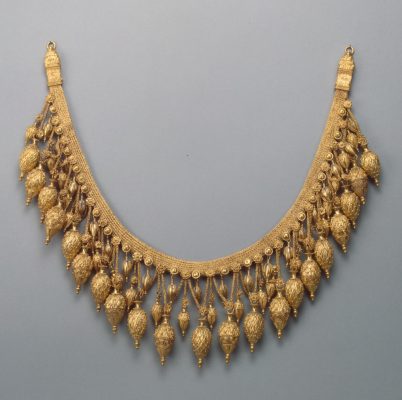
Bolshaya Bliznitsa Barrow. Krasnodar Territory, Taman Peninsula Hermitage ББ.-34

The Northern Black Sea Region. Third quarter of the 2nd century BCE
Found: Artiukhovsky Barrow. Krasnodar Territory, Taman Peninsula
Hermitage

[read more]


V&A M.1-1966 https://collections.vam.ac.uk
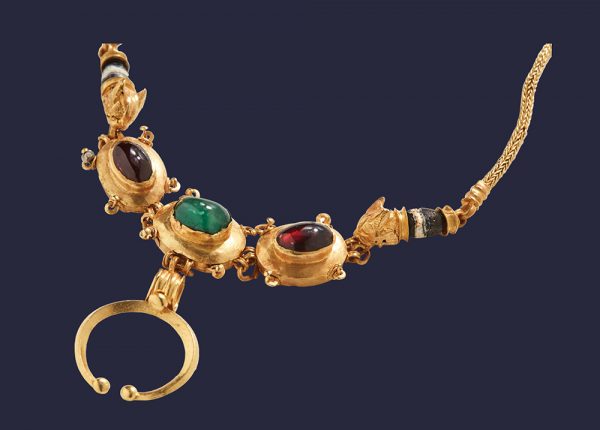
Delos, female grave, 1st century BCE
[read more]

https://www.clevelandart.org

Late 2th-early 1st century BC.
Athens, National Archaeological Museum, XP 940.
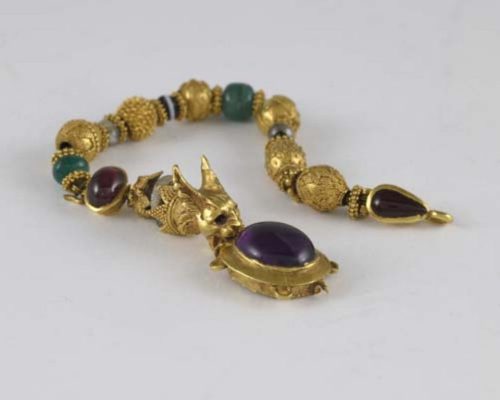
Part of a gold necklace with semi-precious stone beads and a lynx head on one end. 1st c. B.C. Athens, Benaki Museum

1st century, Ukraine

Princeton Art Museum 1999-12

British Museum 1872,0604.670

Chersonesus, Crimea. 1st century
Grave No. 630, environs of the City of Sevastopol.
Gold, garnet, amethyst, emerald, topaz, almandine, pearls and glass. L. 30.5 cm
The Hermitage Museum Х.1896-18



https://archaicwonder.tumblr.com
Hellenistic Butterfly Necklace, 3rd-2nd Century BCE. Gold, garnet, emerald. Length: 28 cm
Necklace sold by Phoenix Ancient Art was bought by
Petit Palais, Museum of Fine Arts in Paris
https://www.parismuseescollections.paris.fr/fr/petit-palais/oeuvres/collier-a-pendentif-en-forme-de-papillon
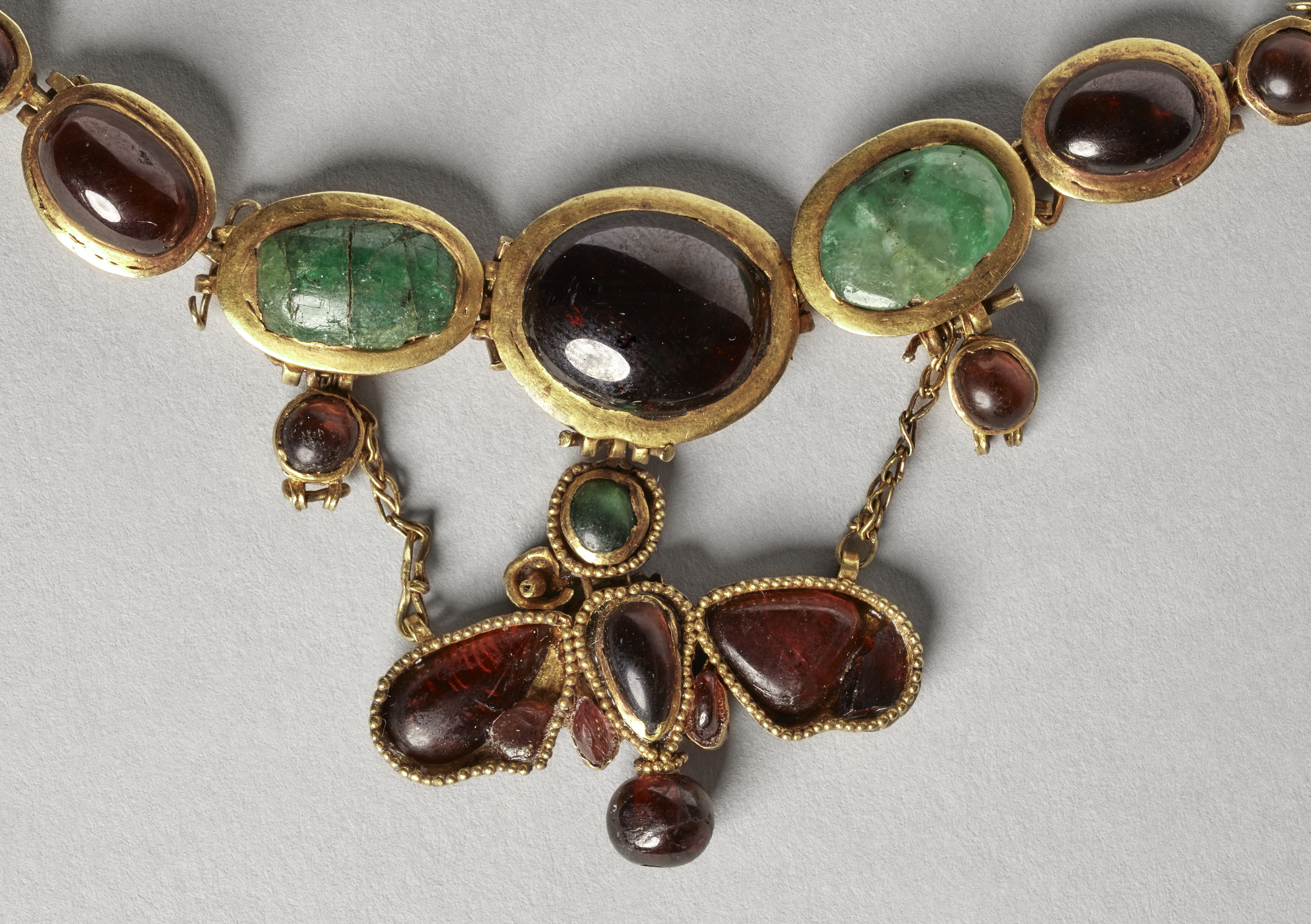
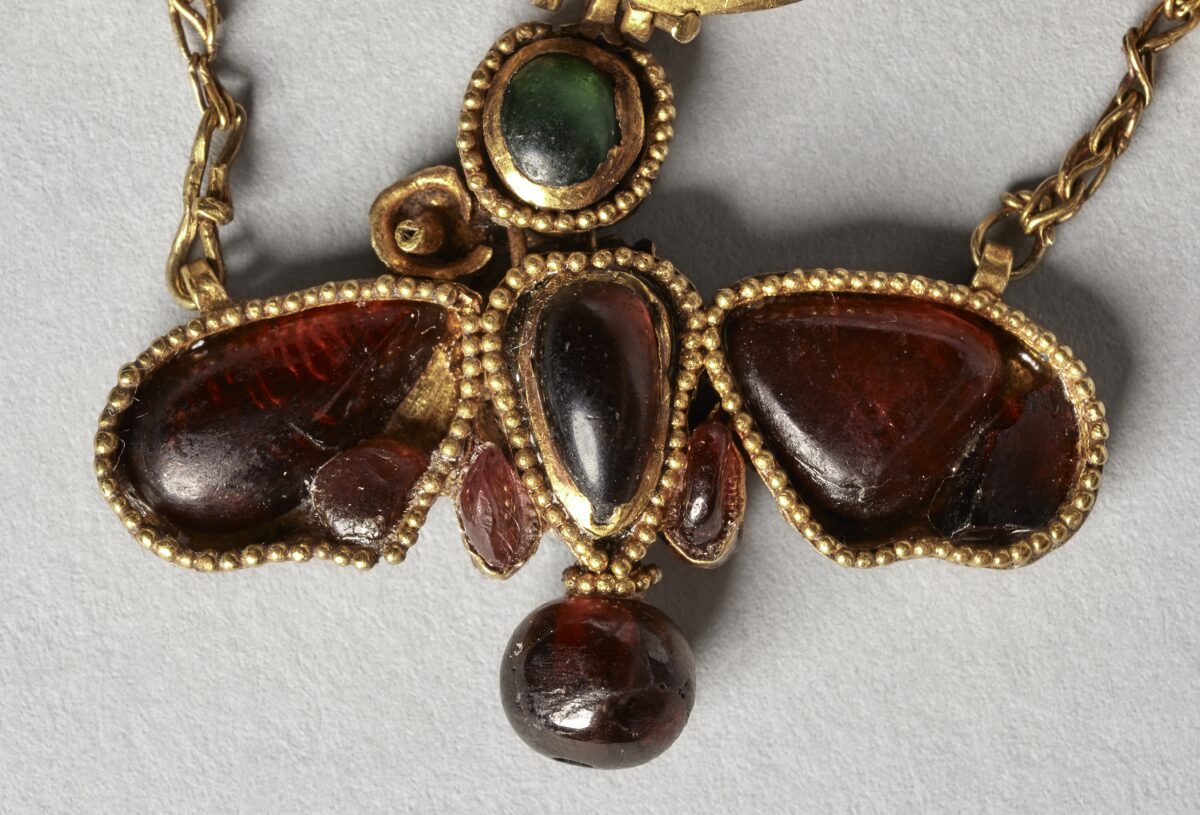

Necklace with a “butterfly” pendant; gold, glass. 1st century, Kerch, Crimea.
Collection of E.P. Zaporozhsky [Собрание Е.P. Запорожского].
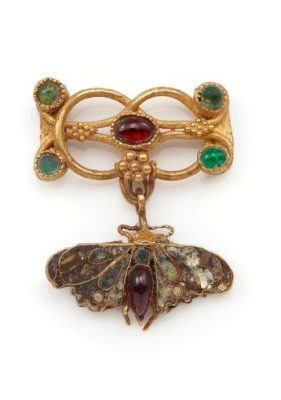

Rostov Regional Museum of Local Lore https://shveda.ru

Gold, garnet intaglio, glass
Ευρετήριο Αρχαιολογικού Μουσείου Θεσσαλονίκης (Ψηφιακό Ευρετήριο – Excel) : ΜΘ 2837
Archaeological Museum of Thessaloniki
https://nationalarchive.culture.gr

Baranovka. Kurgan No. 3/1982. Burial No. 1.
Rectangular necklace with green glass. Volgograd Museum, inv. No. 20192–20193.
Photo by M. Treister, A Diadem from the Khokhlach Burial-mound

1st century B.C.E
https://www.metmuseum.org

2nd century CE.
The Astrakhan Museum-Reserve
“Necklaces of this kind were made in many centers, including Panticapaeum, Olbia, Chersonese, the cities of the Eastern Black Sea region, and were also common in Rome and the Roman provinces.” [read more]

Created: The Northern Black Sea Region. third quarter of the 5th century BC
Found: Nymphaeum necropolis, barrow No. 17, sepulchre No. 8. Crimea, the environs of Kerch (the excavations by A.E. Lutsenko, 1876)
Hermitage Museum Inv. no. ГКН.-16

Found: Panticapaeum necropolis. Crimea, the environs of Kerch.
Hermitage Museum inv. no. П.1854-22
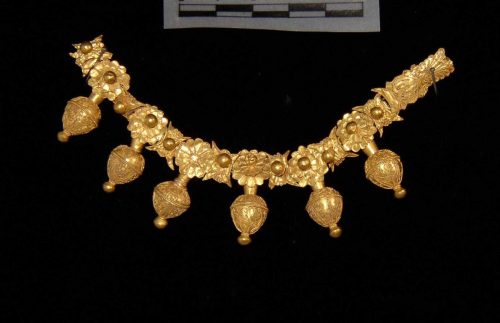
Photo source https://www.archaiologia.gr
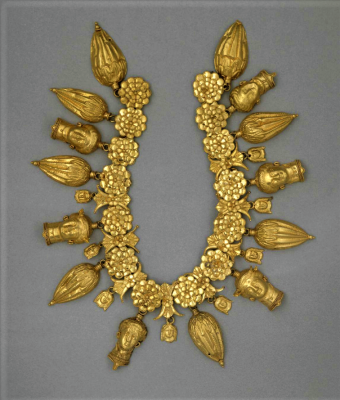
British Museum 1872,0604.667

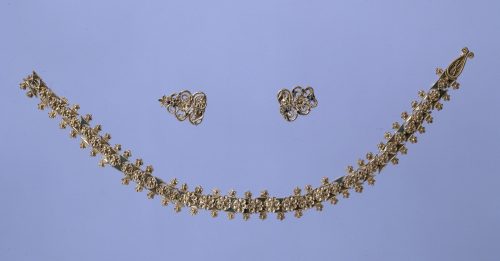
Necklace, Hellenistic
According to Jack Ogden “This necklace is a variation on the rosette and lotus-palmette scheme (Hermitage P.1854.22 and BM GR 1872.6-4.667), the lotus-palmettes here being replaced with ‘double axes’.”

In the Met inv. no. 1995.539.7
“The central ornament of the fillet is a Herakles knot. Two palmettes with a rosette in the middle fill the center of the knot, while the four ends terminate in lion heads. Between the pairs of lion heads on the knot are two exquisitely finished female heads. At the clasp end of the chains are lion-head terminals, each with a ring in its mouth.”

The Northern Black Sea Region. circa 350 BC
Found: Panticapaeum necropolis. Crimea, the environs of Kerch

Hellenistic necklace with female figures and male heads. Museo civico archeologico (Bologna) [The Archaeological Civic Museum of Bologna]. Gold and garnets
Gold necklace with gemstones & glass (according to the museum gemstones are ruby and hematite, but I think it’s a mistake. It would be more carnelian & chalcedony).
Intaglio depictions from the left: Hekate, a hare, female figure, Artemis & a scorpion.
Greece, 3rd–2nd century BCE
National Museum Warsaw source – Museum publication


- M. Treister, Further Thoughts about the Necklaces with Butterfly-Shaped Pendants from North Pontic Area https://www.academia.edu
- M. Treister, Late Hellenistic Polychrome Necklaces (to the origin of Necklaces with Butterfly-shaped Pendants https://www.academia.edu
- F. Fless/M. Treister, Schmuck im Polychromen Stil im nördlichen Schwarzmeergebiet https://www.academia.edu
- Jewelry from the Nogaichik barrow and its comparanda. From: A. Symonenko Roman Import for the Sarmatians of North Pontic Region
- M. Treister, The Necklace from the Odessa Museum: A little-known Find from Olbia or a Fake? https://www.academia.edu/5563514/M_Treister_The_Necklace_from_the_Odessa_Museum_A_little_known_Find_from_Olbia_or_a_Fake_in_Russian_
- M. Treister, A Diadem from the Khokhlach Burial-mound. Reflections on the center of manufacture https://www.academia.edu



